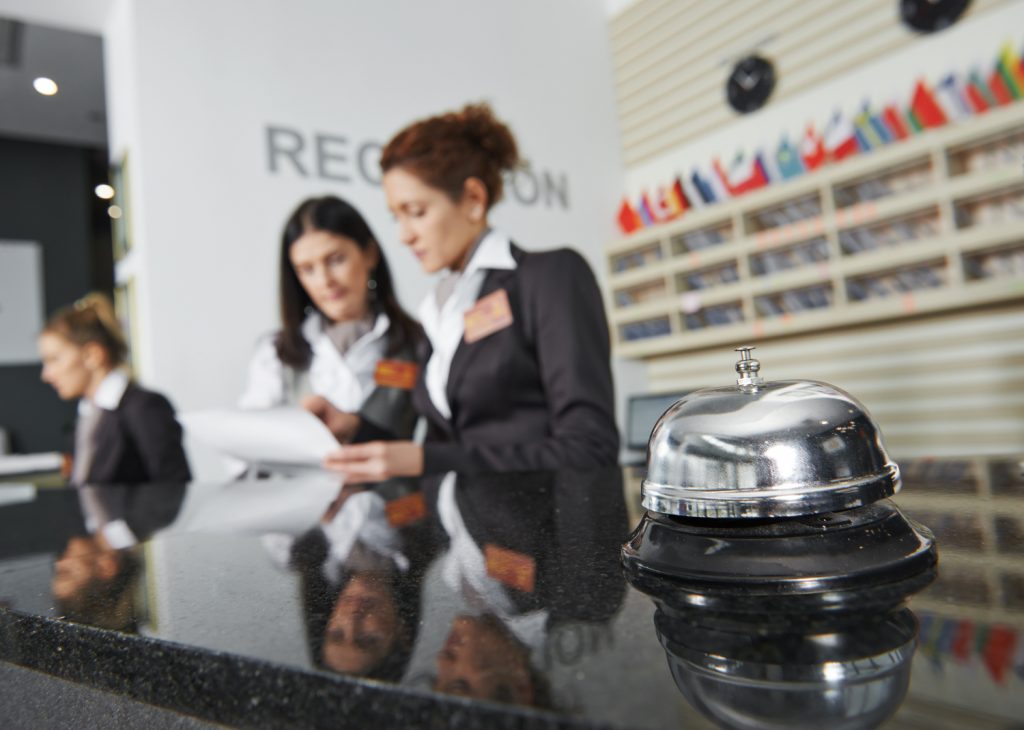AVIXA’s market research shows the pandemic’s effects on the hospitality market.
Others and we have said much about the plight of the live-events portion of the AV business following the cancellations brought on by the novel coronavirus (COVID-19) pandemic. But there is another part of the business whose fate is tied to that of events—namely, hospitality. With corporate events shifting largely online across the globe, and with many travel restrictions limiting business trips, the hospitality market has suffered from a resulting lack of travel. According to the latest data from the Transportation Security Administration (TSA), daily passenger travel through airport checkpoints has been rebounding; although it’s up to around 700,000 per day, it remains below the normal 2.4-million level from a year ago. And, of course, although some travelers might be opting for groundbased transportation means, fewer air passengers generally means fewer seeking accommodations. Although, as of this writing, the full effects on this sector for Q2/20 weren’t yet known, a total contraction in US Q2 gross domestic product (GDP) of more than 30 percent portends a dire result.
The projected impacts to the hospitality market’s commercial AV spending certainly won’t be a surprise, against that backdrop. According to AVIXA’s Industry Outlook and Trends Analysis (IOTA), associated revenues are expected to be down by 17 percent this year, falling from $10.5 billion to $8.7 billion globally. Some might actually be wondering, “Why are the numbers not worse?” The outlook emphasizes a continuing return to travel throughout the remainder of the year—in particular, in parts of the world where the pandemic’s impacts have abated. That might spur renewed investment in AV. However, much is riding on the timelines for approval, distribution and availability of a vaccine and/or other treatments. Thus, the actual results for the year might come in lower than those estimates suggest.
Right now, the conventional wisdom views 2021 as the convergence point in the pandemic response, thereby allowing the hospitality vertical’s commercial AV spending to rebound more meaningfully. AVIXA predicts commercial AV sales to the hospitality market to increase by 12 percent next year, putting it in the top spot as the fastest growing industry sector. Steep declines take considerable time to recover from, however; thus, true expansion beyond the peak set in 2019 is not expected to occur until 2024.
Long-term adoption of collaboration technology as a replacement for business travel could be considered a contributing factor to the longer recovery time here, although that would perhaps reflect a shift in technology investment away from one market (hospitality) and toward another (corporate). It’s not great news for those whose project pipeline is more concentrated in the slower market, but it’s encouraging to know there are related opportunities to pursue.
Although collaboration technology drives other markets, digital signage has been— and will continue to be—a primary focus of hospitality. Perhaps even more specifically, displays themselves are a primary area of investment; indeed, in most years, they account for nearly a third of AV revenues in the hospitality market. With hotels experiencing reduced capacity, investments in these displays has fallen off; however, we forecast that it’ll pick back up in earnest in 2021, rising to 32 percent. Some of this might be driven by the need better to communicate health-and-safety guidelines as part of our pandemic response.
Possibly even better for AV providers, services are the second-largest area of investment for hospitality-property operators; services account for approximately 20 percent of commercial AV spending. Although displays can generate healthy revenue volumes, services most often represent the value-add and the margins that a provider’s business needs. Some of this spend is on cloud-based services to support content distribution to the many displays integrated throughout a property; some is for consulting, design and installation, which are the bread and butter of a solutions business.
If we consider all this, it certainly paints a mixed picture of the hospitality market over the months and years to come. Near term, it shows clear challenges, whereas, long term, the sector has some promise. Individual firms’ results will vary, as well. Although we hope all AV professionals can find safe harbors of opportunity, we recognize that the challenges are real. As always, we want to hear about the experiences of the boots on the ground, and we wish everyone health and hope.
To read more from Sound & Communications, click here.
